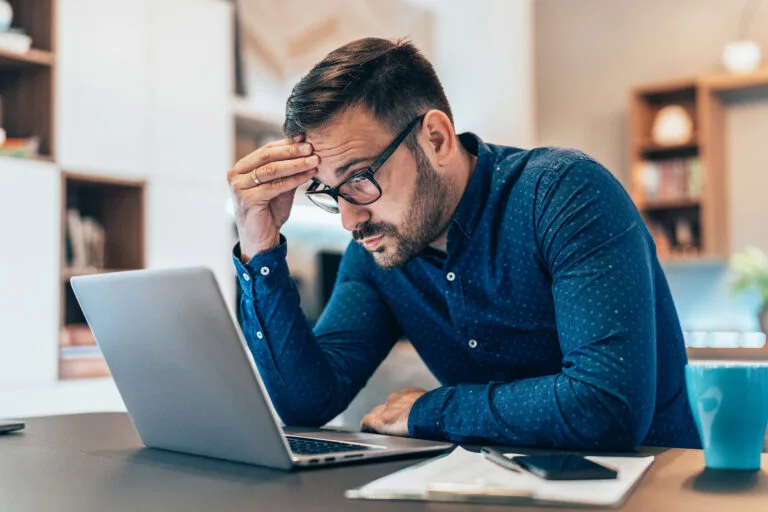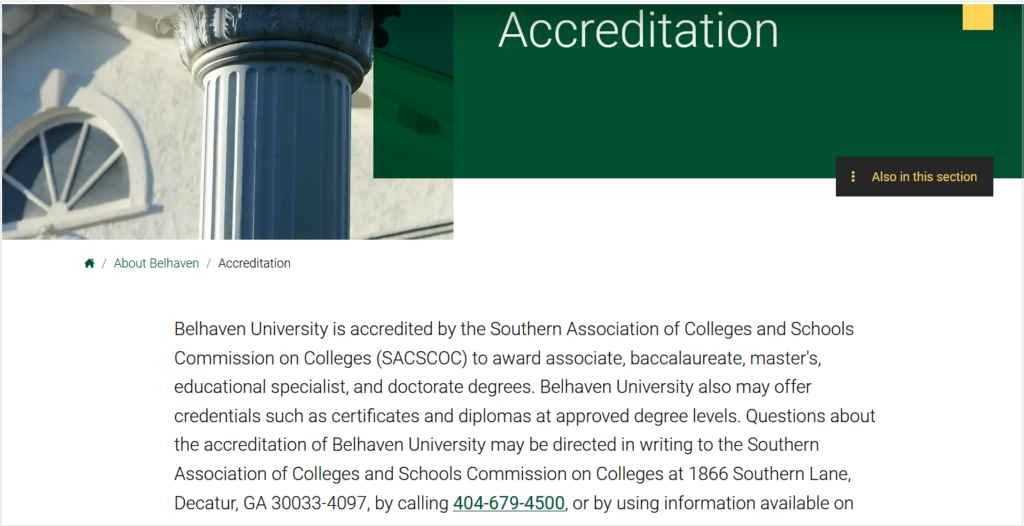Written by
on

So, you’ve been asked to add content to your website because “it’s required for accreditation.” Do you have a strategy for how to respond to requests like these? Do you need a strategy for content that is “required”?
We’ve learned from schools at every level that the answer is yes. You need a strategy and a plan for adaptation. Accreditation requirements for web content matter—yet they are often vague, open to interpretation, and carry a load of faculty and administrator anxiety that can confound all your UX content strategy.
You Need an Accreditation Content Strategy
Without an accreditation content strategy, your prospective students may be greeted by a stiff, intimidating disclosure statement as they arrive at your website. (Worse, it might show up on the search engine results page as the metadescription.)
We know students care about accreditation, yet it needs to surface at the appropriate point in their journey. As you clarify your institution’s strategy for this content, keep the user front and center.
Accreditation 101
If you’re new to working in higher education, the whole accreditation process can be mystifying. Annual reports, learning outcome tables, student demographic data, words like “pedagogy”—it’s a lot of work for a very important reason. Prospective and current students need to know that the school they choose is legitimate and isn’t turning their hard-earned tuition money into useless credentials.
Accreditation also ensures that administrators, faculty, and staff willingly open their doors for a thorough background check. The oversight agencies look for more than just graduation rates—they’re digging deep into curriculum standards, faculty credentials, financial records, student demographics, and more. In fact, post-secondary schools must earn accredited status to participate in federal student aid.
The Council for Higher Education Accreditation (CHEA) has some great information about the who, what, when, and why. They also monitor the accrediting agencies themselves and maintain a public database of over 8,200 institutions and over 44,000 programs in the U.S.
The Top Accreditors Are Regional—Usually
At the institutional level, most colleges and universities in the U.S. undergo review by 1 of 6 regional organizations:
- HLC: Higher Learning Commission
- NECHE: New England Commission of Higher Education
- NWCCU: Northwest Commission on Colleges and Universities
- SACSCOC: Southern Association of Colleges and Schools Commission on Colleges
- WSCUC: WASC Senior College and University Commission
- ACCJC: Accrediting Commission for Community and Junior Colleges Western Association of Schools and Colleges
Regional accreditation is considered the gold standard for institution-wide accreditation. Generally, national accreditation is considered a lower standard for the college or university as a whole. However, CHEA also recognizes certain faith-related governing bodies to accredit religiously affiliated schools nationally. There’s also a CHEA-recognized organization for schools whose students learn primarily by distance education—a modality at odds with the notion of “region.”
First, Verify the Requirements
As an accreditation deadline looms or a website overhaul ramps up, administrators and content managers are already harried. The requirements might be buried inside a 100-page policy PDF or guarded behind a portal with a login no one remembers. There’s rarely time to investigate the rules. That’s when we hear such directives as:
- “Just get it up there on the homepage somewhere.”
- “Put it at the top so the accreditors see it.”
- “Keep it the way we’ve always done it.”
That’s not really helpful—to the accreditors or to your future students.
Do the legwork; discover the requirements.
Start with the Required Words
Accrediting bodies provide the specific wording they require every school or program to use when claiming their accreditation status. These statements typically include the full name of the accrediting body, their full contact information, and a link to their site, for example:

In an ideal world, this verbiage would be conveniently accessible on the agency’s website. Unfortunately, it’s not always easy to locate—we were unable to find the official guidance on the websites for NECHE and WSCUC despite extensive searching.
If you need to hunt for it, try searching with the current wording or keywords like website, compliance, disclosure, public, status, advertising, or marketing.
Accrediting bodies care about your students, but not necessarily your students’ experience on your website.
It’s a given that we can’t change the words. What we can control is where it’s positioned on the page. An administrator may tell you to “put it at the top so the accreditation agency sees it.” In fact, this is rarely required and has a strong likelihood of stopping the user’s journey in its tracks. Analytics and usability testing clearly show that students are drawn to practical details (location, tuition, etc.) and emotional appeals to their career aspirations. Presenting them with a dry official statement is never a good first impression.
Unless the official agency says otherwise, it’s OK to place a regional accreditation statement on a child page, in an accordion, or towards the middle or even near the bottom of the page.
Most schools choose to publish their institutional accreditation statement within their “About Us” section:




Other schools publish their accreditation status as part of a fact sheet or in website sections devoted to compliance, policies, academic affairs, institutional effectiveness, or consumer information:



Some schools create a page that lists not only the primary accreditation statement, but links to accredited programs as well. This can make it easier for the marketing team to monitor and maintain:

Assuage the Internal Anxiety
The accreditation process is always stressful, so a documented web content strategy can help alleviate worries and avoid last-minute decisions. Be sure to have the URL(s) for the specific requirements and a simple visual mockup ready to share, along with links to accreditation pages at other schools governed by the same organization.
ALERT: We did the legwork for you! See the links in the Quick Reference section.
Your content team should also anticipate potential obstacles and have focused talking points handy. Always acknowledge the concerns and reinforce that your recommendations are based on thorough research and long-term strategy. Some examples might include:
- “We understand it may seem risky to make this change. We’ve done our homework, and we’re confident that this strategy will meet the requirements and streamline future updates.”
- “We know it’s sometimes difficult to visualize what we’re suggesting. Here’s a quick example of what the new page will look like.”
- “Our web analytics and industry research have shown us that prospective students and other key stakeholders expect to find accreditation information in the ‘About Us’ section.”
If an anxious administrator holds out for a particularly awkward implementation, recruit support from a trusted department director or project champion. They can give you pointers on finding the most persuasive words to achieve consensus.
If all else fails, ask, “When is your next accreditation review?” Offer to hold the changes for their program until after their next review cycle.
It Comes Down to this: Research, Plan, Communicate
You, your department chairs, and the accrediting bodies all want to help prospective students make smart choices. Keep the focus on what’s best for your user, and you all win.
Remember: Web Pages Belong to the Users
Accreditors and administrators are not your target audience. Don’t be afraid to flex your content strategy muscles to reinforce your professional expertise. Developing trust with leadership teams is crucial for a vibrant and engaging website that truly works.
It’s time to create a student-centered content strategy for your accreditation info. Email us today.


